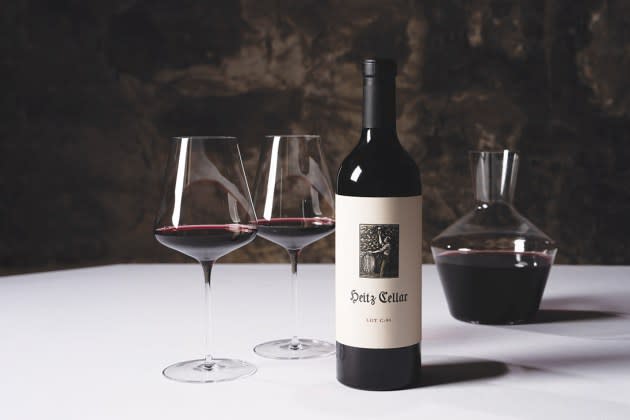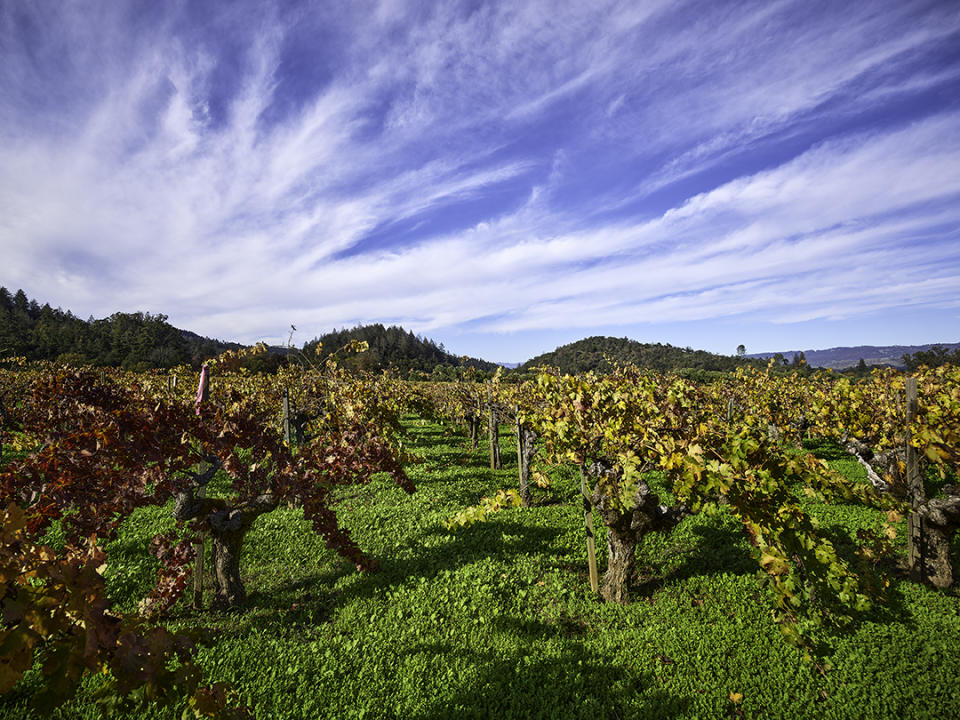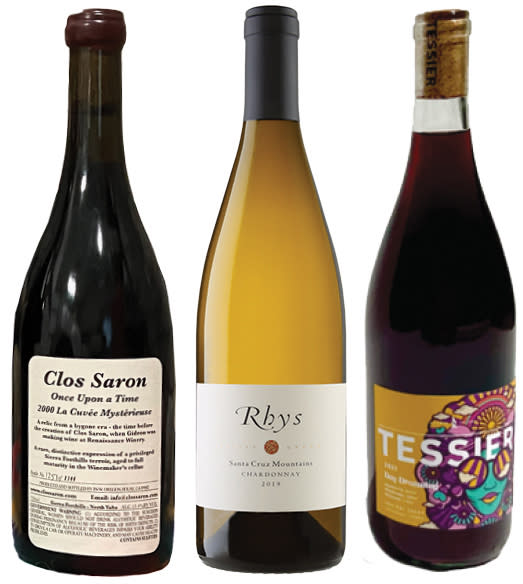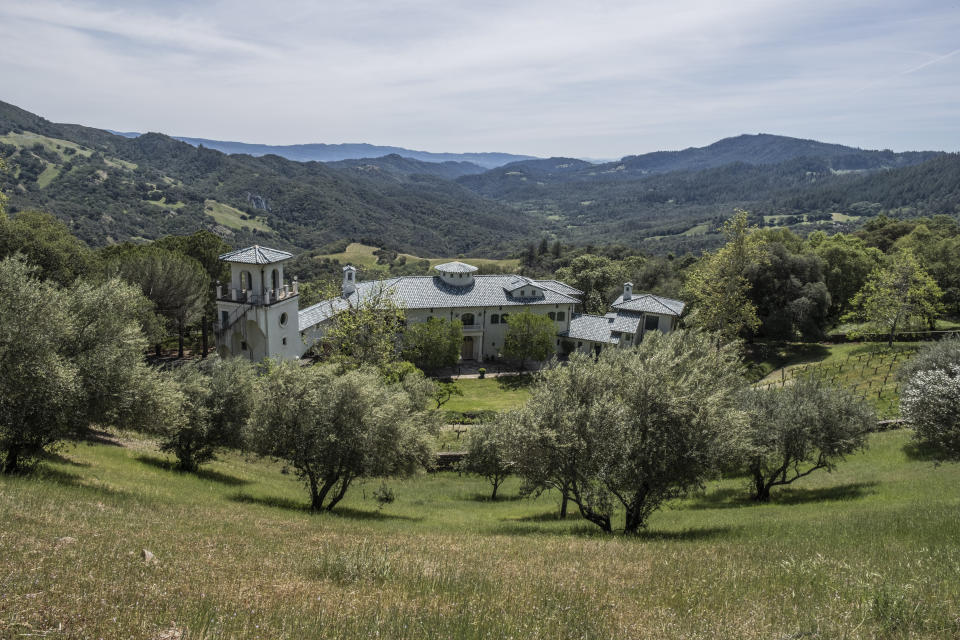The New Cult California Wines: Sip Into Something More Comfortable

Cult wines are a very American and, more specifically, Californian phenomenon. Akin to another industry-beloved status symbol, the Hermès Birkin bag, they are meticulously crafted, sought-after commodities that are exceedingly scarce and difficult to procure. The term rose in popularity in Napa Valley in the 1990s to describe flashy cabernet sauvignon blends with perfect scores by top wine critics, outrageous prices and insatiable demand.

“Most of these wines were simply well-made, small-production wines and the owners had no intention of multiyear wait lists,” says master sommelier Vincent Morrow, wine director of Michelin-starred Press Restaurant in Napa’s St. Helena.
More from The Hollywood Reporter
How to Make Your Own Bespoke Wine With the Best Vintners in the World
Don Julio 1942 Makes a Splash at the Oscars: Here's Where to Buy the Celeb-Approved Tequila Online
“Given that a vineyard will take at least six to seven years before it’s producing optimum fruit, and it only bears fruit once a year, the economic nature of these small vineyards was that production could not scale at the pace of any rapid increase in demand. Thus, when the great reviews came out, wines immediately sold out.
“Toward the turn of the century, Napa, and California at large,” continues Morrow, “became a victim of its own success, with a frenzy of new brands chasing a style of wine built around ripeness, texture and opulence that was consistently awarded high marks.”
The Cult Wine Titans
With an average price per bottle around $4,000, Screaming Eagle is considered the O.G. of California cult wines. Former owner Jean Phillips originally sold her grapes to producers for several years and reportedly made a small amount of wine herself in a plastic trash can that she gifted to clients. “When she enlisted Heidi Barrett to make the first commercial vintage in 1992 and scored an unprecedented 99 points from wine critic Robert Parker, it immediately got people talking,” says Amanda McCrossin, sommelier and host of the Wine Access Unfiltered podcast. “Since then, the wine’s demand has skyrocketed and it’s still the most sought-after wine in Napa Valley.” Harlan Estate, Opus One, Sine Qua Non, Dalla Valle and Promontory are also members of this exclusive club of blue-chip wineries that retain their mythical status while commanding global praise. Bottles from some of these makers start around $275 a bottle (if you can even get your hands on one).
Revived in 2012 by present owner Scott Becker, Realm Cellars also produces highly sought-after and collectible wines. “Realm is an interesting story where people and design and vineyards all came together to create something very modern, unabashed and very elegant,” adds McCrossin.

Another revered cult winery, Scarecrow, has ties to Hollywood’s Golden Age. The land where Scarecrow’s prized grapes are grown — a vineyard that is said to be home to the oldest vines in Napa — was founded by MGM studio exec J.J. Cohn, who oversaw the productions of Gigi, National Velvet, Mutiny on the Bounty and The Wizard of Oz, with the name Scarecrow being a nod to the beloved character from the Academy Award-winning film.
Thinking Beyond Wine Scores
“Consumers used to only think in terms of the 99- or 100- point wine and didn’t see anything past that,” adds Morrow, who was named California’s sommelier of the year by the Michelin Guide in 2022. There’s been a big pendulum shift from that thinking, and cult wine now means something entirely different to the current and next generation of wine consumers. “Customers are now interested in gaining a much deeper understanding into the story behind the wine,” he adds. “Without story there’s nothing — there’s no experience, it’s just fermented juice and that’s less interesting for today’s consumer.”

Whereas flashy wines were not celebrated as quality choices in Europe, they have been the hallmarks in America. “We essentially put our own spin on what Europeans created and have been trained to think about wine as big and powerful,” explains Morrow. But he believes California may not have received the attention in the first place had we not made wines this way. “It was always bigger is better — more oak, more ripeness, but that’s not the case anymore,” he adds. “We are maturing as a region and there is a correction going on now stylistically with winemaking, especially in the face of a warming planet and increase in fires.”
Carlton McCoy, master sommelier and CEO of Lawrence Wine Estates, also sees a dialing back from what he refers to as “hedonistic wines” to wines with more restraint. “What’s exciting now are old-school style wines that are more discreet and not compromised by oak and ripeness,” he tells THR. “The grapes are picked earlier, they’re more vibrant, site specific, terroir driven and nuanced. When you drink a wine that hits all those marks there’s a high you get from it; it’s like being at a jazz club where all of the musicians are hitting the notes and it’s magic.”
The New Frontier of Cult Wines
Myles Trapp, sommelier at industry beloved Napa hideaway Auberge du Soleil, agrees that the American wine palette is expanding. “While the preference has been toward bold flavors that smack you in the face, the modern wine consumer is looking for something different, with more synergy and balance,” he says, adding, “People are opening their minds and palettes and starting to appreciate more fine-tuned, delicate wines.” Consumers are also shifting their attention to wines rooted in origin and intentional production. “This is how Europeans have viewed wines,” says Morrow. “The focus is on managing the vineyard in a healthy, sustainable way so that the next generation can succeed here, alongside capturing the flavors and aromas that are native to that grape and where it was grown, in the best and purist way possible without any additives or interference.”

Trapp points to Clos Saron in the Sierra Foothills as an example of the next frontier of cult wine. Clos Saron is owned and farmed by husband-and-wife team Gideon Beinstock and Saron Rice; the former was influenced by the great wine growers in France and spent a lot of time there. “Their vineyard is stressed and succumbing to environmental stressors such as frost, so the yields are low, but the wines are really phenomenal with hidden power and intensity,” adds Trapp. He also has his eye on Lawrence Wine Estates (Burgess, Ink Grade, Heitz Cellar, Stony Hill and more). “Carlton McCoy is putting together a dream team of young winemaking talent who are being given the resources to achieve their vision, both viticulturally in harmony with the ecosystem, and on the winemaking front.”
Adam Hopkins, wine director for Toscana Restaurant Group’s Nella and SY Kitchen in Santa Barbara County’s Santa Ynez Valley, looks for wines he refers to as “revelatory” and pushing the envelope.

“It happens once every few months where I discover a wine I haven’t experienced before,” he tells THR. He points to Railsback Freres from Santa Maria Valley as an example. “All of their wines are fantastic and brothers Eric and Lyle Railsback have great sensibilities. Their Syrah is a standout — it’s lean and fresh with bright fruit but not overripe, as is their 100 percent Counoise, which is usually a blending grape and so interesting.”
Brvghelli is another one of his picks. “Michael Brughelli makes one pinot and one chardonnay grown in the Santa Maria Valley and they’re exceptional,” he adds.
Like Trapp, Morrow is intrigued by wines from the Sierra Foothills, specifically Amador County, which is about 90 minutes east of Napa. “It’s more off the beaten path and spread out, like how Napa was 50 years ago, and there is so much possibility there,” he says. “Notable Napa winemakers such as Helen Keplinger of Keplinger Wines and Grace Family Vineyards are sourcing grenache and Syrah from this area at a more accessible price point.” Morrow also sees a lot of potential in neighboring Lake County. “The cost of land and the permitting process there is much easier from a farming standpoint,” he says. “Lake County also has correlations with Sicily as far as elevation and types of soil, including volcanic; it’s an area with opportunity and room for entry.”
Melissa L. Smith, founder of Enotrias Elite Sommelier Services, wine cellar management and appraisal consulting, is impressed with wines from Anderson Valley in Mendocino County. “About three hours north of San Francisco and stretching all the way to the coast, it has proven to be an exceptional region for growing Alsatian varietals, the historically collectable Burgundy varietals — pinot noir and chardonnay — and is at the top of the list for lesser-known regions, although it has gotten a ton of press lately,” says Smith. “Some of my favorite vintners have wines from Anderson Valley.” Among her top picks are Jolie-Laide, “some of the most interesting and sought after single varietal wines on the market,” and Rhys Vineyards (“one of the first wines I chose to collect, winemaker Jeff Brinkman makes some of the best and most collectible pinot noir and chardonnay in Northern California”). She’s also a fan of Tessier, founded by “a scientist working on the Human Genome Project turned winemaker — Kristie Tacey is making exceptional wine from tiny remote vineyards such as classic pinots and head-tilting blends.”


Smith predicts the wineries that have been established since the ’90s, such as the aforementioned O.G.’s, will continue to thrive and is excited about two newcomers that have ties to Bordeaux: Cathiard Vineyard, owned by the same family as the prestigious Château Smith Haut Lafitte, and Pym-Rae. The latter was purchased by Alfred Tesseron of the Fifth Growth-classified Bordeaux Pontet-Canet and Cognac house Tesseron in 2016; the Napa Valley estate was previously owned by the late Robin Williams, who is said to have christened the vineyard with the middle names, Pym and Rae, of two of his children.
Tesseron kept the name to honor its meaningful heritage. “Cathiard and Pym-Rae are both bringing over a hundred years of history and experience to Napa Valley and will elevate the category and demand,” says Smith.
As U.S. and global tastes evolve, McCoy is optimistic about where the industry is headed. “Winemaking is both a passion business and artistic craft,” he says, “and we need to continually explore different approaches while being stewards of the land for future generations.”
A version of this story first appeared in the April 10 issue of The Hollywood Reporter magazine. Click here to subscribe.
Best of The Hollywood Reporter


